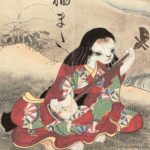- True kimono men wear Inbanasu
- A sleeveless Tonbi
- Worn with shirt+jeans combo
- The historical Inverness
- Classic with sleeves and kimono
インバネス
romaji: Inbanesu
Inverness
Inverness coat (Inverness coat) is a kind of cloak for men. Sometimes it is simply called Inverness. Highly popular in Japan. Convenient to wear over a kimono. Acquired during the Meiji era.
Mainly of men in Japan kimono used as a coat, ” Nijumawashi ,” ” double turn “, ” double cloak “, ” kite “, ” inverter ,” ” Environnement is referred to as”. In general, “Inverness Court” has sleeves, double turns have no sleeves, Cape under the best shape and Cape covers the shoulder. In Konibi the cape does not reach the back, and often refers to something without a cape in the back part. Length of dress reaches double knee and also kitten.
These designations are confused and various definitions are made, but historically it is not something that can be said to be right. Write a definition that is done relatively well for reference.
- “Inverness Court” – a mantle with a sleeved cape.
- “Double crocodile” “double mantle ” – a mantle with a cape without a sleeve.
- “Tonbi” – A mantle where there is no sleeve and the back part of the cape is integrated with the back part of the coat.
Meiji 20 years ( 1887 transmitted to the around), Taisho from Showa was popular over the initial. At that time the cloak called ‘Inverness Court’, ‘Double Turn’, ‘Double Mantle’, ‘Tenni’ was something that only ‘ Oeda ‘ could wear. The design of Inverness Court seems to be one of the reasons for the epidemic that the large sleeves of the Japanese clothes do not get in the way, so practicality was very high. In the present age where the kimono itself declined, it was not seen much, but when you wear a kimono, there is still demand for Inverness Court with a retro and elegant atmosphere as a winter clothes, dealing with a clothing for kimono There are also many shops selling in stores.
Film director Itami Zozo says “Inverness as a kimono is just one example of great success in western and western competition , like rice curry and fukumurake .”
Technical communication from Scotland to Japan immediately after the opening of the country, including Thomas Gravel , known at the Gracer House in Nagasaki , visited Japan and friends were deep, and Japanese students were also visiting Aberdeen (the hometown of Gravel), Glasgow , Edinburgh , It was accepted prior to the confusing Japanese government at that time [ citation needed ] . According to this thing, Japanese and Scottish people who came home introduced introduction / brought to Japan such as “Inverness Court”, “Hikaru no Hikari”, “Whiskey ( Takesukura Masataka , Wife’s Takesukura Rita is Scottish)” Seem.
romaji: Inbanesu
romaji: Inbanesu
Inverness
Inverness coat (Inverness coat) is a kind of cloak for men. Sometimes it is simply called Inverness. Highly popular in Japan. Convenient to wear over a kimono. Acquired during the Meiji era.
Mainly of men in Japan kimono used as a coat, ” Nijumawashi ,” ” double turn “, ” double cloak “, ” kite “, ” inverter ,” ” Environnement is referred to as”. In general, “Inverness Court” has sleeves, double turns have no sleeves, Cape under the best shape and Cape covers the shoulder. In Konibi the cape does not reach the back, and often refers to something without a cape in the back part. Length of dress reaches double knee and also kitten.
These designations are confused and various definitions are made, but historically it is not something that can be said to be right. Write a definition that is done relatively well for reference.
- “Inverness Court” – a mantle with a sleeved cape.
- “Double crocodile” “double mantle ” – a mantle with a cape without a sleeve.
- “Tonbi” – A mantle where there is no sleeve and the back part of the cape is integrated with the back part of the coat.
Meiji 20 years ( 1887 transmitted to the around), Taisho from Showa was popular over the initial. At that time the cloak called ‘Inverness Court’, ‘Double Turn’, ‘Double Mantle’, ‘Tenni’ was something that only ‘ Oeda ‘ could wear. The design of Inverness Court seems to be one of the reasons for the epidemic that the large sleeves of the Japanese clothes do not get in the way, so practicality was very high. In the present age where the kimono itself declined, it was not seen much, but when you wear a kimono, there is still demand for Inverness Court with a retro and elegant atmosphere as a winter clothes, dealing with a clothing for kimono There are also many shops selling in stores.
Film director Itami Zozo says “Inverness as a kimono is just one example of great success in western and western competition , like rice curry and fukumurake .”
Technical communication from Scotland to Japan immediately after the opening of the country, including Thomas Gravel , known at the Gracer House in Nagasaki , visited Japan and friends were deep, and Japanese students were also visiting Aberdeen (the hometown of Gravel), Glasgow , Edinburgh , It was accepted prior to the confusing Japanese government at that time [ citation needed ] . According to this thing, Japanese and Scottish people who came home introduced introduction / brought to Japan such as “Inverness Court”, “Hikaru no Hikari”, “Whiskey ( Takesukura Masataka , Wife’s Takesukura Rita is Scottish)” Seem.
Toggle 2






